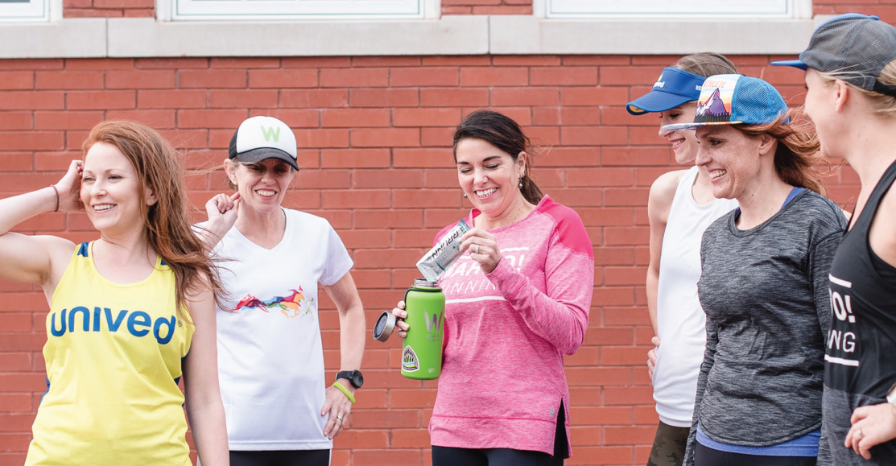
Marathon Nutrition is an Energy Game
FUELLING |by Lisa Braden, MS, RDN, CSP
There is no 'wall' when you are properly fueled.
If you want to race at your best, nutrition must be a part of it. We store energy in our bodies in the form of glycogen, but we don't have enough glycogen to get us through a marathon performing at 100%. We have to make up the rest of the energy we need through taking in carbohydrates during our race and doing the work leading up to race day.
The keys to marathoning at your best include (1) building up your glycogen stores during the taper phase (2) eat a solid breakfast the morning of the race (3) fueling well during the race (4) and eating for recovery after the race. Each of these components looks a little different for each athlete. How fast you run, how much you weigh, and what settles in your stomach are among some of the considerations.
My goal for 2018 was improved marathon performances for WAHOO! RUNNING coaches, Christie Thomas and Carlee Daub. I knew that they were falling short on the energy needed to make their marathon times match their training. In visual terms....
I made individualized race nutrition plans for Christie and Carlee. They were to put these plans to the test at the New York City Marathon in November, so they could learn, adjust and execute their plans during their goal race at the California International Marathon (CIM) in December.
What did I consider when designing their plans?
- How many calories I thought they would burn.
- Estimated current glycogen storage levels.
- Use 1 & 2 to estimate how many calories they needed to take in during the race.
We also set some hydration goals based on sweat rate calculations we had done earlier in the year. The numbers were crunched, the testing was done, now, it was time to send them off to try it.
Vary your sources of carbohydrates. Avoid overloading one system.
Part of marathon nutrition is getting different sources of carbohydrates from different types of products. If you use the same source of carbohydrate, for example all maltodextrin, you can overload the system and have unwanted side effects like trips to the bathroom during the race.
Christie’s & Carlee’s plans had carbohydrates coming from hydration products, gels, chews, and even some real food. Unived RRUNN Endurance Energy Gel and Unived RRUNN Pre Energy.
Sports Drink Mix were part of this equation.
The RRUNN Energy Drink mixes front loaded carbs and hydration in the beginning stages of the race, while the RRUNN Endurance Gel Espresso Cappuccino Gels gave a nice carb and caffeine boost in the later stages of the race. Also, if you haven't discovered their collapsible water bottle - you need to! It's quite a handy product.
Coach Christie had immediate success. She ran a negative split on a difficult course and her final mile was the fastest of the race. Wahoo! We knew she was set and ready for CIM. Coach Carlee did a great job executing the plan and came within one minute of her PR, but realized at the finish that we needed to up her carb load for CIM. We adjusted the plan, and we were ready to go.
The day came to run CIM, just four weeks after New York City. This can be risky because marathons can take a lot out of your body. However, both Carlee and Christie were ready to attack those 26.2 miles on the sunny streets of Sacramento. And boy did they ever. Christie ran a 3:30 marathon, the fastest time she had seen in 18 years, and a full 20 minutes below her Boston Marathon qualifying time. Carlee ran a 15 minute PR and was less than a second shy of her first Boston Qualifying time. When you fuel correctly, the final miles of a marathon are no longer a death march, but a celebration of all the hard work you have put in to get there.

